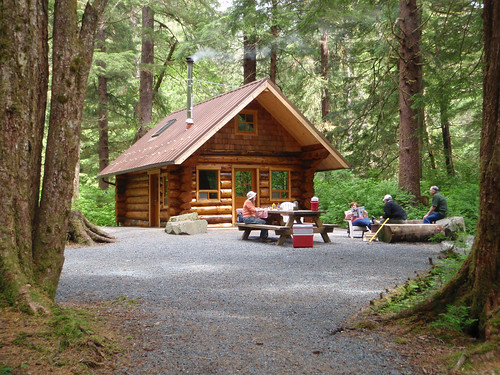
When a family packs up their car for a trip out to their national forests and grasslands, they create more than just memories. They create jobs.
Nearly three-quarters of Americans live within 100 miles of a national forest or grassland. Every year national forests and grasslands receive nearly 150 million visits, most of which, about 85 percent, are for recreational purposes.
So how does this translate to jobs?
The simple answer is that the recreation economy is an enormous economic driver. In fact, Outdoor Industry Association found that in 2012 recreation contributes $1.6 trillion to the U.S. Gross Domestic Product. And, last year, consumers spent $887 billion on recreation, supporting 7.6 million American jobs.
“When someone heads out to recreate, they need supplies. They need guidance. They need accommodations,” says U.S. Forest Service Director of Recreation, Heritage and Volunteer Resources, Joe Meade. “These needs open the door for sports equipment retailers, hotels, outfitters, guides, even restaurants, gas stations, and even souvenir shops.”
In 2014, recreation on Forest Service lands contributed more than $10 billion to the U.S. economy. The Forest Service is able to do this not just because of the sheer number of recreation sites, but because of the diversity of landscapes and locales offered.
“The recreation capacity of the Forest Service is huge,” says Toby Bloom, National Program Manager for Travel, Tourism, and Interpretation at the Forest Service. “175 forests and grasslands across the country mean that there’s something for everyone from hiking among the redwoods of California, to skiing in the mountains of Colorado, even walking the rainforest of Puerto Rico.”
The U.S. Forest Service footprint is large and the agency’s managed lands are home to the largest managed trail system in the country—nearly 160,000 miles of them. There are also thousands of campgrounds, tens of thousands of recreation areas, millions of acres of lakes and wilderness, hundreds of thousands of miles of fishable streams, and more. The Forest Service happens to also host 60 percent of the downhill skiing capacity in the U.S. a substantial seasonal economic force in many places in the country.
Because not every aspiring recreationist is an outdoors expert, the national forests and grasslands support over 7,000 outfitters and guides. Most of these are small businesses that provide jobs and revenue to small towns in rural America. Many of them are family owned, with generations of the same family supporting themselves and their community through a deep cultural and economic connection to the land. Entire communities prosper across the country because of the steady, reliable, and enthusiastic influx of tourists and recreationists seeking out the thrill of white water rapids, or the reflective solitude of wilderness.
In fact, rural areas with a land base including public lands like national forests and grasslands benefit the most. Areas where that land base of public lands was 30 percent or more experienced 345 percent job growth over the last 40 years. Similar areas with no public lands had less than a quarter of that growth over the same period.
“This goes to show how valuable our national forests and grasslands are for the American people,” Meade says. “It’s not just timber, it’s not just environment, it’s not just recreation—it’s the whole package, and it’s an excellent investment for the American people.”



